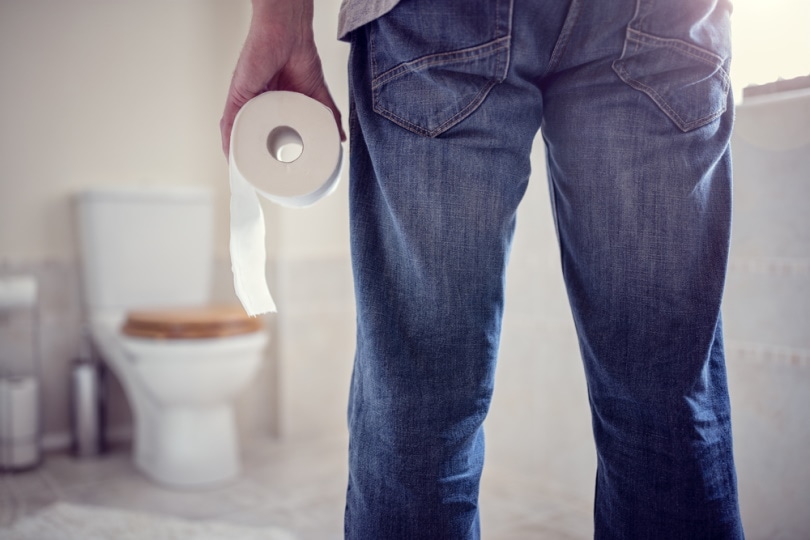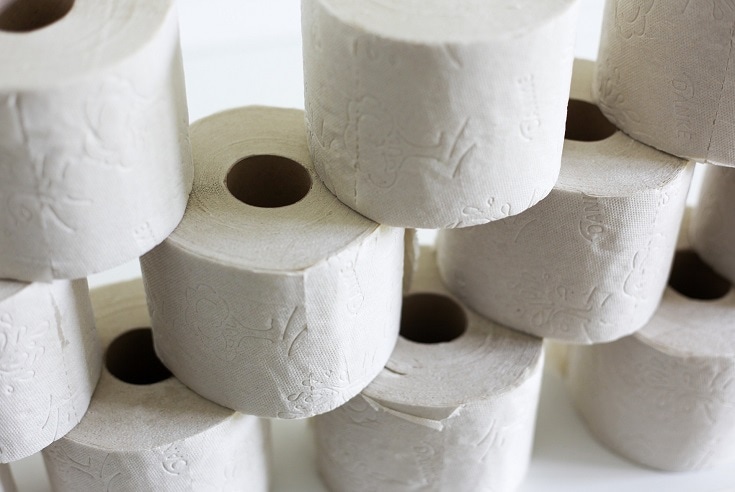Is Toilet Paper Biodegradable? Facts & FAQ
-
Pete Ortiz
- Last updated:

Conventional toilet paper is a multibillion-dollar industry worldwide, and America takes the lead when it comes to the use of toilet paper. Americans go through an average of 141 rolls a year1, and the United States spends an average of $6 billion a year on toilet paper2. That’s a lot of toilet paper being flushed down the can!
Is toilet paper biodegradable? Yes, all toilet paper is biodegradable. However, biodegradable toilet paper differs in that it dissolves faster, making it naturally septic safe.
How Long Does Toilet Paper Take to Decompose?
Regular toilet paper takes 1–3 years to decompose fully, while biodegradable toilet paper takes 1–2 months. A few factors influence the process of decomposing: the thickness of the tissue, water availability, and environmental factors.
Thicker tissue will decompose more slowly. The higher volume of the material decreases the biodegradation rate, but not significantly. However, super-thick toilet paper may not dissolve in time for a septic tank. Water quality is also important. The ratio of water to tissue influences how quickly it degrades.
If you are an outdoor enthusiast and have taken your toilet paper on a hiking trip, it is important to dispose of it correctly. While left on the ground, it will biodegrade, but the process is faster with water.

Is Toilet Paper Compostable?
Toilet paper can be composted as long as it hasn’t been used to clean up anything that is not compostable, like oil, chemical spills, or pet waste. Composting toilets exist solely to produce compost from used toilet paper. However, the toilets aren’t very good at composting. They are better suited for initiating the composting process and transferring the material to another compost heap.
What Is Biodegradable Toilet Paper?
Biodegradable toilet paper is an improved version of regular toilet paper; the fibers are even shorter and degrade much more quickly, making them an excellent choice for septic systems.
- Bamboo: Bamboo is widely available, simple to grow, and has natural antibacterial properties. It is one of the best materials to achieve the same softness we enjoy with regular toilet paper.
- Recycled paper: Recycled paper is a bit rougher and not so pleasant to use. However, its eco-friendly impact is significant. By using recycled paper, energy consumption is reduced by 28%-70%, trees are saved, and water use is substantially less.
- Hemp: The popularity of using hemp instead of trees is growing because of its eco-friendly benefits. When made into toilet paper, hemp provides numerous advantages. It has softer fibers, is tougher than wood pulp, grows much faster, and has antibacterial properties.
- Kenaf: Kenaf grows 34 times faster than the southern pine and produces far more material in the same amount of time. Kenaf is a plant that can replace trees in the production of paper.
- Bagasse: Bagasse is a by-product found in the waste of sugar production. It has a similar softness to bamboo and is frequently combined with it to strengthen the fibers of toilet paper. Not only does it save trees, but it also reduces the waste in sugar production.
In general, the best biodegradable toilet paper brands will be those that can replicate the qualities that have made traditional toilet paper so popular: softness, toughness, and absorbency.

Test How Your Toilet Paper Breaks Down
The water bottle test is easy to see how quickly your bathroom tissue breaks down and begins to biodegrade in water. It’s a simple test that requires a few empty water bottles, some water, and the eco-friendly toilet paper you want to try.
- Fill the bottle with water and fold a few pieces of toilet paper into a square.
- Place the square of paper into the water and leave it for about 30 seconds
- Now shake the bottle about five times and have a look at how the toilet paper has reacted.
- Leave it for a few hours and then examine the reaction of the toilet paper.
This test will reveal how well the toilet paper breaks apart in water and if it starts the process of decomposing.

What Effect Is Toilet Paper Having on Our Environment?
Certain tissue product brands are worse than others, but conventional toilet paper generally is bad for the environment.
Tissue product ingredients differ depending on the brand and company. Tissue products like paper towels, facial tissues, and toilet paper have one component in common: paper pulp. One of the primary sources of paper pulp is virgin fiber, which is by far the most troublesome of the paper sources.
Virgin fiber pulp is primarily harvested from forests such as Canada’s Boreal Forest and Sweden’s Great Northern Forest. The harvesting of virgin fiber for toilet paper has decimated the forests and the natural habitats they provide for many animal and plant species. Toilet paper manufacturing also pollutes the environment by releasing toxic chemicals. When harvested trees arrive at a pulp processing mill, they are chipped, and the wood chips are combined with chemicals to produce pulp. The pulp is bleached to make the paper white which releases chlorine as a by-product into the atmosphere.
In Conclusion
Toilet paper is biodegradable, but it still takes a fair amount of time to decompose. There is also the looming concern of its environmental impact, making it a not-so-eco-friendly and unsustainable product. With the consumption rate of toilet paper in America, it would be more sustainable to switch to biodegradable toilet paper. It’s easy to find and affordable, and you will have peace of mind next time you flush your loo paper down the toilet.
Featured Image Credit: Brian A Jackson, Shutterstock
Contents


